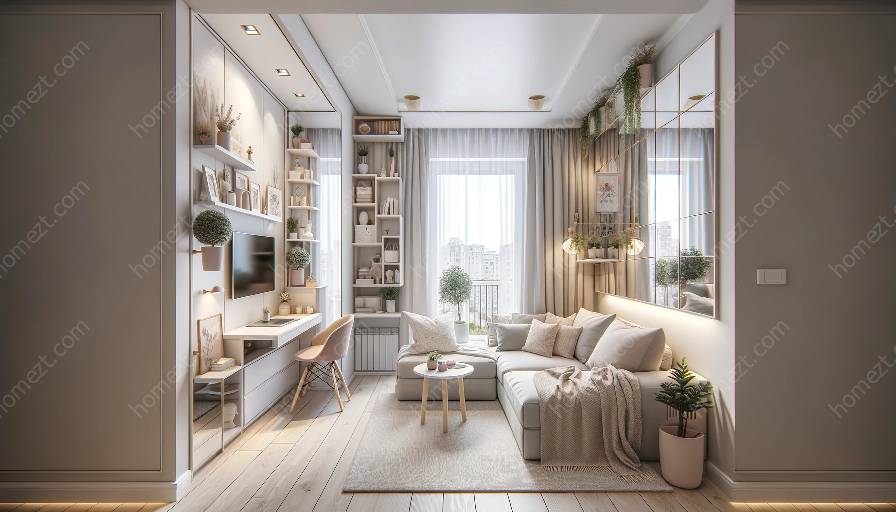Living in a small space doesn’t mean sacrificing style and functionality. By understanding the principles of effective layout design, you can create a comfortable and visually appealing living area. Whether you're looking to maximize space utilization or add decorative elements to your small living space, there are several key principles to keep in mind.
1. Functionality and Flexibility
When designing the layout of a small living space, prioritizing functionality and flexibility is crucial. Consider multi-functional furniture pieces, such as a sofa bed or a coffee table with storage compartments, to maximize the utility of the space. Additionally, opt for flexible seating arrangements that can easily be rearranged to accommodate different activities or guests.
2. Utilizing Vertical Space
Small living spaces often lack floor space, making it essential to utilize vertical space effectively. Install floating shelves, wall-mounted storage units, and tall cabinets to make the most of the available vertical space. This approach not only enhances storage capacity but also adds visual interest to the room.
3. Creating Visual Flow
Establishing a visual flow within a small living space can make it feel more open and cohesive. Use area rugs to define different zones within the room, and arrange furniture in a way that allows for easy navigation and a sense of openness. Opt for a cohesive color scheme and avoid clutter to maintain visual harmony.
4. Natural Light and Mirrors
Amplifying natural light can make a small living space feel larger and more inviting. Opt for light and sheer window treatments to allow natural light to enter the room freely. Additionally, strategically placing mirrors can create the illusion of space and reflect light to brighten up the area.
5. Scale and Proportion
Consider the scale and proportion of furniture and decor items to ensure they complement the size of the space. Avoid oversized furniture that overwhelms the room and opt for sleek, appropriately scaled pieces. Balance the visual weight of items by distributing them evenly throughout the space.
6. Personalization and Decor
Personalizing a small living space through decor adds character and charm. Incorporate decorative elements such as artwork, plants, and textiles to infuse the space with personality. However, be mindful of maintaining a sense of balance and avoiding clutter with your decor choices.
7. Organization and Storage Solutions
Effective organization and storage solutions are essential for maintaining a clutter-free small living space. Utilize built-in storage, under-bed storage containers, and modular shelving to keep belongings organized and out of sight. By maximizing storage capacity, you can keep the space tidy and visually appealing.






































